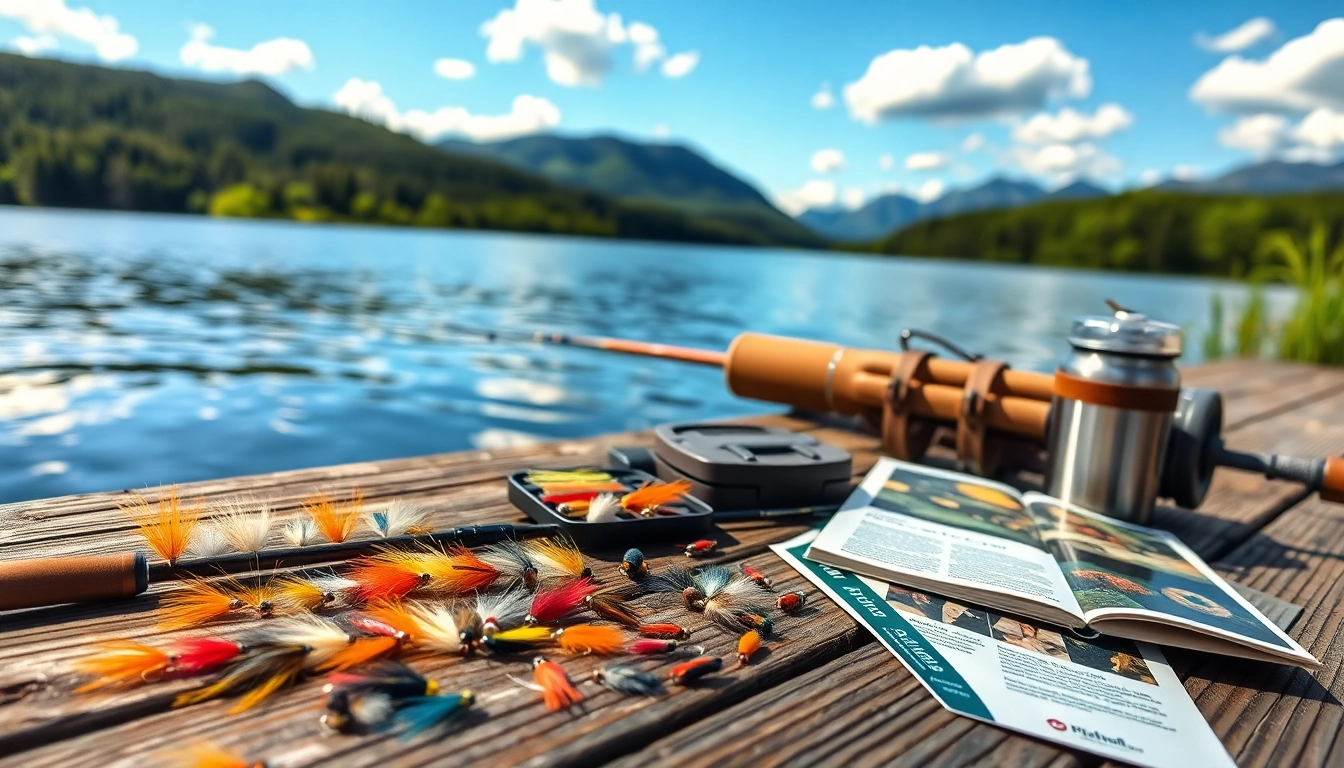Understanding the Essentials of a Fly Fishing Kit
Whether you are an experienced angler or someone just stepping into the exciting world of fly fishing, having the right equipment is paramount to enjoying a successful outing. A well-constructed fly fishing kit not only boosts your chances of catching fish but also enhances your overall fishing experience. In this article, we will explore the core components of a quality fly fishing kit, how to choose the right gear, and why a customized kit can make a significant difference in your fishing adventures.
Components of a Quality Fly Fishing Kit
A fly fishing kit generally comprises several essential components that work together to improve your chances of success when on the water. Understanding these components will help you make informed choices when assembling your kit.
- Fly Rod: The fly rod is your primary tool for casting flies to fish. Fly rods vary by length and action, impacting how they perform under different conditions.
- Fly Reel: This part is crucial for controlling the line and helping you land fish. A quality reel retains the line securely while allowing for smooth retraction and release.
- Fly Line: The line acts as the connection between your rod and the fly. Its weight and taper affect your ability to cast accurately and effectively.
- Leader Line and Tippet: These lines are attached to your fly and play an important role in stealth; they can be incredibly thin and transparent, making it harder for fish to detect.
- Flies: These are the imitations of bait that you cast into the water. Selecting the right flies based on the water conditions can make a significant difference.
- Accessories: Tools like nippers, forceps, and floatants are also essential to round out your kit and enhance your fishing efficiency.
Choosing the Right Fly Rod and Reel
Choosing the appropriate fly rod and reel is critical as they determine your casting ability and overall fishing performance.
When selecting a fly rod, consider the following:
- Length: Longer rods can cast further and efficiently manage long distances but may be cumbersome in small streams.
- Action: Rods have varying actions, from slow to fast. Fast action rods generate a lot of power quickly and are suitable for bigger flies and wind, while slow action rods offer more flexibility and are better for beginners.
The reel should complement your rod and line weight. Ensure the drag system performs smoothly to handle the weight of fish you expect to encounter.
Selecting Flies for Various Water Conditions
Choosing the right flies is integral to your success as a fly angler. Freshwater and saltwater environments each require different approaches.
For freshwater, consider the following factors:
- Hatches: Understanding the insect life cycle helps you match your flies to what fish are actively feeding on.
- Water Conditions: Flies should differ between clear and murky waters. Bright colors can work better in darker environments.
In saltwater, the size and type of fish influence your fly selection. Patterns like clouser minnows are popular for a wide range of species.
Benefits of Using a Tailored Fly Fishing Kit
Assembling a fly fishing kit tailored to your specific needs comes with numerous advantages, making your fishing trips more enjoyable and productive. Let’s delve into the benefits.
Improving Your Casting Techniques
A customized fly fishing kit allows you to select equipment that suits your physical abilities and the fishing environments you frequent. The right rod and line combinations greatly enhance your casting techniques, enabling you to deliver flies more accurately, increasing your chances of a catch.
Enhancing Your Fishing Success Rates
When your fly fishing kit includes specific gear that aligns with your fishing style and the local fish species, it translates directly to improved success rates. A strategic selection of flies and accessories can make the difference on any given day.
Minimizing Gear-Related Frustrations
A well-thought-out kit reduces the frustrations often associated with mismatched or insufficient gear. By ensuring everything you need is on hand, you can focus on the experience rather than hunting for missing components or struggling with ineffective equipment.
Advanced Techniques for Fly Fishing Kit Customization
To maximize your effectiveness as a fly fisherman, consider integrating advanced techniques into your kit customization. The following sections outline several strategies for personalizing your fly fishing kit.
How to Personalize Your Fly Selection
To personalize your fly selection, keep a fishing diary that tracks what types of flies work best in different conditions, from water temperature to insect activity. This ensures that you adapt your fly assortment over time based on your experiences and environmental factors.
Incorporating Technology into Your Kit
Modern technology can take your fishing to the next level. Many anglers now use fish finders and smartphone apps that provide information on current water conditions, weather forecasts, and even popular fishing spots. Incorporate a waterproof phone case in your kit to utilize these tools effectively while on the water.
Building a Seasonal Fly Fishing Kit
Organizing your fly fishing kit seasonally allows you to optimize your choice of flies and tackle for fluctuating conditions. In spring, include nymphs and emerging insect patterns; summer may call for terrestrial patterns; fall could require streamers that mimic larger baitfish. Adapt your kit as you transition through the seasons.
Common Mistakes to Avoid with Your Fly Fishing Kit
Even experienced anglers can fall into traps that complicate their fishing outings. Below are common pitfalls to be aware of when managing your fly fishing kit.
Overpacking and Its Consequences
It’s easy to overpack when preparing for a day of fly fishing. Carrying excess gear can lead to fatigue and frustration, especially when hiking to remote fishing spots. Focus on the essentials: a well-rounded, targeted kit tailored to your specific fishing plans.
Neglecting Maintenance of Your Gear
Your fly rod, reel, and lines should receive consistent maintenance. Saltwater fishing can be particularly harsh—always rinse your gear thoroughly after each outing. Inspect your gear regularly for any signs of wear and replace it when necessary.
Ignoring Local Fishing Regulations
Staying informed about local fishing regulations is crucial in maintaining sustainable practices and avoiding penalties. Different regions have distinct rules that could include catch limits, seasonal restrictions, and specific gear regulations. Always do your research ahead of time.
Measuring Your Fly Fishing Kit Performance
To ensure your fly fishing kit remains effective and efficient, it’s wise to measure its performance periodically. Below are key strategies for evaluating your kit.
Setting Relevant Goals for Your Fishing Trips
Before each trip, define specific goals such as targets for species, locations, or techniques to master. Setting measurable objectives can help you gauge your success or identify areas needing improvement.
Evaluating Your Gear’s Efficacy
After each fishing trip, take the time to reflect on how your gear performed. Did your rod and reel work seamlessly? Were your flies effective? Document your insights to adjust your kit for future outings.
Improving Future Kits Based on Feedback
Your fishing experiences provide valuable feedback. Use this information to refine and improve future kits. Experiment with new flies, rods, or techniques based on what you’ve learned to create a kit better suited to your needs over time.


